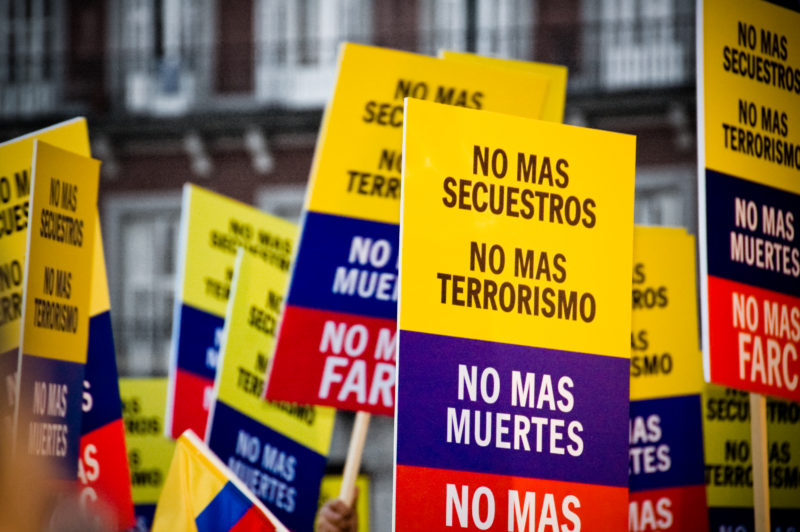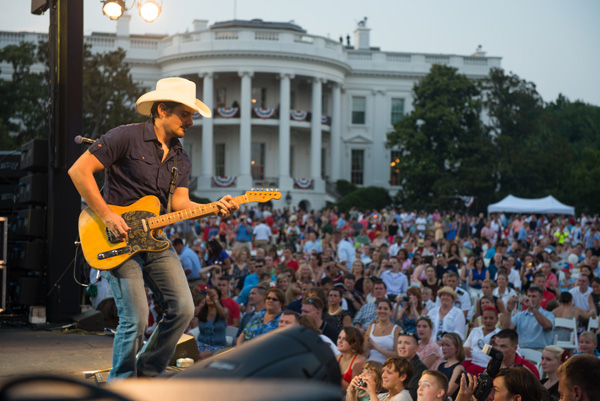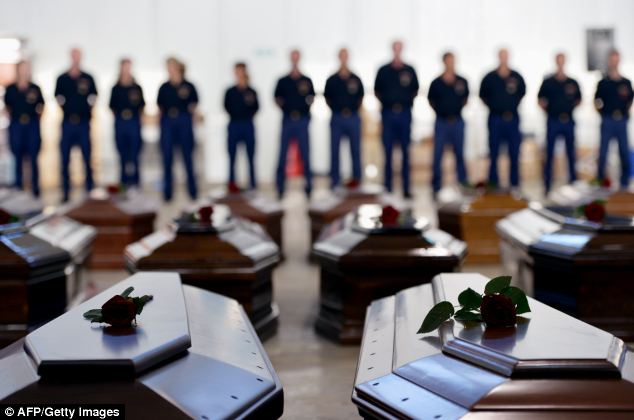On October 2, 2016 Colombians took to the polls to decide whether or not to accept a peace deal brokered between the Colombian government and the Revolutionary Armed Forces of Colombia (FARC). In a shocking result, Colombians rejected the peace agreement and sent both sides back to the drawing board. After being plagued by civil conflict for the last 52 years, Colombia now has a second chance at peace.
The FARC:
The FARC was founded in 1964 as a left-wing, Leninist-Marxist guerilla group, consisting of mainly rural farmers and land workers. The movement sought to address economic inequalities and more specifically, fought for greater land control and increased land rights for citizens. The FARC incited violence throughout Colombia and engaged in narcotrafficking, kidnapping and hostage-taking, as well as forced recruitment of children and youth. Throughout the 1990s, the FARC became one of the largest players in Colombian drug trafficking, which was used to finance their resistance efforts. At its peak in 2002 the FARC controlled a third of Colombia and had over 20,000 fighters. Today, the FARC has approximately 7,000 active FARC fighters and is led by Rodrigo Londono Echeverri or Timochenko, as he is commonly referred to.
The Conflict:
The 52-year conflict involving the Colombia government and paramilitary forces, as well as the FARC and other armed rebel groups, such as the National Liberation Army (ELN), has affected 7 million victims who have disappeared or have been displaced, and resulted in the deaths of 220,000 people. Each side of the conflict has been involved in killings, kidnappings, bombings and widespread displacement of Colombian people. In large part, this violence has been due to the involvement of the FARC in narcotrafficking and the aggressive stance the Colombian government has historically taken in an effort to quell the FARC movement.
Negotiations:
In November 2012, the FARC and the Colombian government began negotiations to put an end to the conflict. Peace talks first took place in Oslo, Norway, and later in Havana, Cuba. Discussions focused on issues such as land reform, the disarmament of FARC forces, political representation and participation of FARC members, and victims’ rights. Finally, after years of negotiations, a peace agreement was reached and signed on September 26, 2016 by both Colombian President Juan Santos and FARC leader Timochenko in Cartagena, Colombia, with a bullet pen.
The Referendum:
Following the official signing, a Referendum was held to solidify the Agreement. On October 2, 2016, Colombians were asked “Do you support the final agreement to end the conflict and build a stable and lasting peace?” Despite the Referendum being open to all 35 million Colombians, voter turnout was very low with only 38% of voters, or 13 million people, casting their vote. The Agreement was expected to pass as early polls suggested that 66% of voters would accept the deal. However, Colombians shocked the world with 50.2% of voters rejecting the peace deal.
Why Peace Failed:
There have been a number of explanations for why the Peace Agreement failed and why many Colombians voted “No”. For some, it seemed the Peace Agreement rewarded rather than penalized FARC rebels for their crimes by offering lenient punishments. Others suggested that the promise of political representation for the FARC was unjust. And still others considered the financial support offered to rebels seeking new careers as entrepreneurs and business persons too great, given the number of hard-working average citizens who struggle daily in Colombia. Former Colombian President Alvaro Uribe publicly opposed the Peace Agreement, adding additional support to the “No” camp.
What’s happening now?
After the results were announced, neither the FARC nor the Colombian government wanted to see the country return to violence and agreed to maintain the ceasefire until the end of the year. Despite President Santos stating that there would be “no Plan B”, both parties returned to the drawing board to renegotiate a peace deal.
Earlier this month President Santos stated that “substantial progress” had been made on a new peace agreement and that he hoped to negotiate another deal before the end of the year. And after 15 days of negotiations, a modified peace agreement was reached on November 12, 2016. The new deal is said to have incorporated changes to punishment for those accused of crimes and drug trafficking, reparations for victims, and safeguards for property owners, although more details will be released at a later date. However, it is still unknown what the next step in the peace process will be.
The unknown future of peace in Colombia leaves Colombians, and the rest of the world, questioning what peace will look like in Colombia, and when it be achieved? However, one thing is for certain: the Colombian people are dedicated to ensuring a meaningful, just and lasting peace by their own accord.
Special thanks to Lina Najar for her insight into the Colombian peace process and her review of this article.
Photo: “No + FARC”, Demonstration against FARC Guerrilla (2008) by Camilo Rueda López via Flickr Licensed by CC 2.0
Disclaimer: Any views or opinions expressed in articles are solely those of the authors and do not necessarily represent the views of the NATO Association of Canada.




